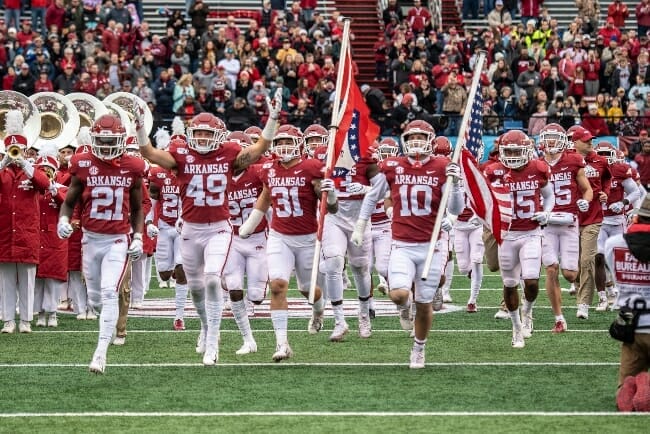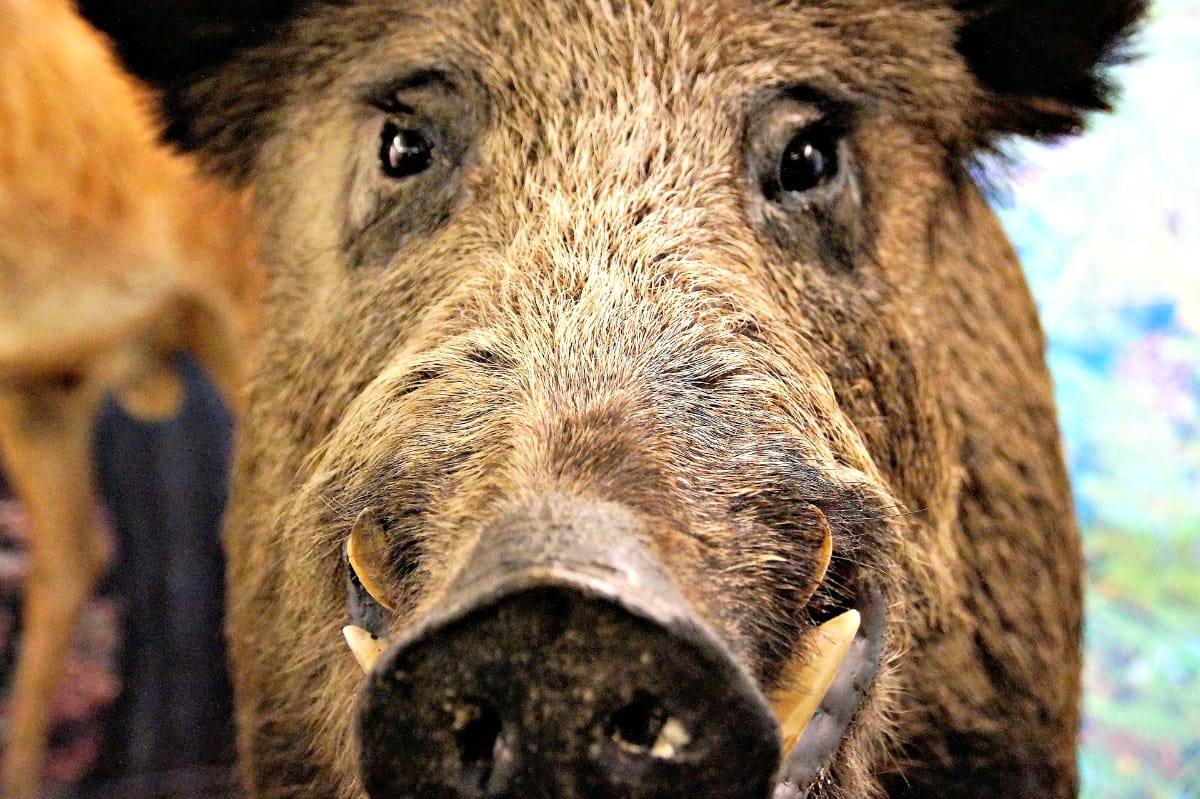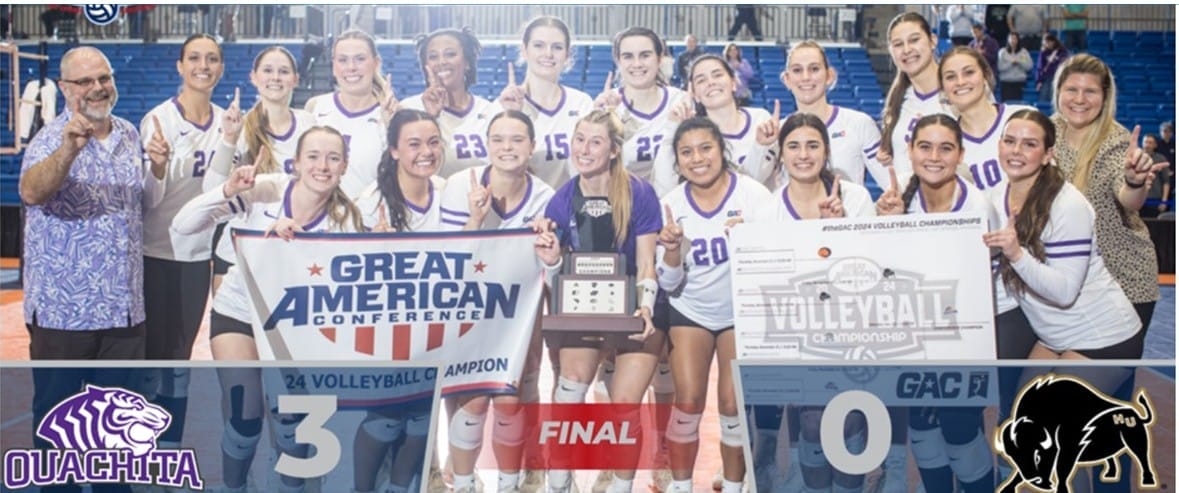

Uh oh...
It appears that you're using a severely outdated version of Safari on Windows. Many features won't work correctly, and functionality can't be guaranteed. Please try viewing this website in Edge, Mozilla, Chrome, or another modern browser. Sorry for any inconvenience this may have caused!
Read More about this safari issue.

Many things may come to mind when you think of Arkansas, depending on whether you live in the state, have visited Arkansas, or simply know it’s somewhere in the South. It’s hard to choose just ten things Arkansas is known for in a state full of beautiful lakes and state parks, Hot Springs’ downtown history, Arkansas fishing, culinary delights, and of course, Johnny Cash.
But, here are ten things that Arkansas is known for and, for better or for worse, continue to shape Arkansas today.

1. Razorbacks and Woo Pig Sooie
Arkansas is known for its wild pigs that inhabit the state, but when you mention Razorbacks, it’s likely to be the sports teams at the University of Arkansas. The university adopted the Razorback mascot in 1910, and year after year, the “Hogs” take on the competition in the Southeastern Conference. If you attend a sporting event or even just stroll across campus on a game day, you’re likely to hear more than one Hog Call, the rallying cry of Razorback fans. The famous Woo Pig Sooie cheer is adapted from the more traditional hog call that farmers once used. Its use as a cheer dates back to the 1920s and may have started when farmers cheering on the football team used woo pig sooie to encourage the players. The tradition has become one of the most famous things Arkansas is known for.
2. Hillbillies
It’s true that Arkansas has historically been synonymous with hillbillies, the name given to the mainly poor, white people inhabiting the Ozark Mountains in the 19th and 20th centuries. The term didn’t originate in Arkansas. It likely came from combining the term “hill-folk” with the Scottish word “billie,” which meant friend or companion. Writers are to blame for the way the word became ingrained in the cultural view of Arkansas. In the 1800s, humorists like C.F.M. Noland used the term in stories about the Ozark hill folk for New York’s “The Spirit of the Times.” With writer Opie Read’s comic newspaper, “Arkansas Traveler,” the image was cemented into the minds of many.
Twentieth-century media depictions did little to help as the radio show “Lum ‘N Abner” played off the hillbilly idea, as did “The Beverly Hillbillies.” The hillbilly image, even though it only describes a narrow, historical segment of the population, has been a hard image for Arkansas to shake. Some embrace the hillbilly image, though, and it denotes a certain pride in individual ingenuity and rural life.
3. Chicken
Arkansas is the No. 1 exporter of chicken, and the poultry industry in Arkansas has enjoyed a long and lucrative history, at least for the owners of the poultry plants. In the early 1900s, apples and cotton were the state’s largest crops, but some entrepreneurs stepped into the poultry business. Fayetteville businessmen Richard Clark and Jay Fulbright were the first to begin shipping their poultry out of state. Farmers began experimenting with building larger chicken houses. When drought hit the apple crops in 1927, some farmers turned to raising chickens. Springdale became the center of this new industry as farmers searched for reliable ways to transport their poultry out of state.
John Tyson created his company in the 1930s, which combined the poultry industry with transport. As the industry grew, Tyson Foods continued to dominate that poultry market. The industry has had its ups and downs and its problems. The poultry industry created a demographic shift in Arkansas as immigrants came in to fill low-wage jobs. Today Tyson Foods is the world’s second-largest meat processor and marketer of chicken, beef, and pork.

4. Walmart
In 1950, Sam Walton opened Walton’s 5 & 10 in downtown Bentonville. It wasn’t his first store. He’d already operated a successful shop in Newport and worked for J.C Penney. Those experiences helped him formulate the successful strategy for what would become Walmart. From 1950 to today, Walmart has grown from an initial five and dime to one of the top retailers internationally. It is the largest private employer in the United States, with 1.6 million employees. Members of the Walton family consistently rank on the list of the world’s wealthiest people, and the Walton Family Foundation awards millions of dollars in grants each year. Whether you like Walmart or not, it is Arkansas’s most successful company, which continues to impact the state each year.

President William J. Clinton
5. President Bill Clinton
Although Bill Clinton served as President of the United States over two decades ago, he is still arguably the most recognized person associated with the state. Clinton’s strong ties to Arkansas are only natural. He grew up in Hope and graduated from high school in Hot Springs. After attending George Washington University, Oxford, and Yale, he returned to Arkansas to teach law at the University of Arkansas. Clinton became the state’s second-youngest governor in 1978. He is also Arkansas’s second-longest-serving governor. Much of Clinton’s focus as governor was on educational reform. Bill Clinton served as President of the United States from 1992 to 2000. The William J. Clinton Presidential Library and Museum in Little Rock archives Clinton’s journey to and through the presidency.

6. Diamonds
It may come as a surprise to some, but Arkansas is famous for its diamonds. It has the only public diamond mine in the world. Located in Murfreesboro, Crater of Diamonds State Park has allowed visitors to dig through its 37-acre diamond field (without any motorized tools). Since the site has been open to the public, over 75,000 diamonds have been discovered. That includes the largest diamond dubbed the “Uncle Sam,” a 40.23-carat diamond found in 1924. Another famous diamond is the “Star of Arkansas,” at 15.33 carats. The state park is located on an old volcanic crater, which blew the diamonds to the surface millions of years ago. Today, the state park that surrounds the diamond field offers a museum, visitor’s center, camping and more to all those who come to Arkansas to scout for diamonds.
7. Small Towns with Funny Names
Arkansas is a state of small towns, but many of these take their small-town vibe one step farther. With names like Smackover, Umpire, Toad Suck and Booger Holler, these towns bring a smile and a story with their monikers. Smackover is the nickname given to areas in Union and Ouachita counties for the amount of sumac that grew wild. The land was “sumac couvert” or covered in sumac. If pronounced quickly, Smackover is the end result. Umpire is named for a man from Mena, Arkansas. He umped a particularly good baseball game in a nearby town that was searching for a name. Umpire stuck. Stories like this abound behind every small Arkansas town with a funny name.
8. Duck Hunting
Hunting is certainly a popular activity across the state, but duck hunting in Arkansas is particularly great. Arkansas earned a Grade A from Duck Hunting Nation for its abundance of waterfowl, bag limits, ease of getting a hunting license, and access to public lands for hunting. In addition, the city of Stuttgart holds the World Championship Duck Calling Contest and Wings Over the Prairie Festival every Thanksgiving weekend. The festival is the largest outdoor expo promoting duck hunting and draws over 60,000 people each year.

9. The Little Rock Nine
In 1957, following a court order to desegregate schools, nine Black students enrolled at Central High School in Little Rock. What followed became known nationally and even internationally because of its role in desegregation and the civil rights movement. The nine students were initially barred from entering the school by a mob, and by the Arkansas National Guard, under orders from Governor Orval Faubus. President Eisenhower responded by federalizing the National Guard to protect the students instead of preventing them from entering. He also sent an additional army unit. The nine students then endured a turbulent year, but they persisted in their studies at Central, and in May, Ernest Green became the first Black graduate from Central.

10. Crystal Bridges Museum of American Art
Now in its 11th year, Crystal Bridges Museum of American Art has established itself as a world-class museum and the center for American art. The museum was the vision of longtime art collector Alice Walton, and the Walmart heiress partnered with world-renowned architect Moshe Safdie to create a museum that joined art with nature. It’s located on 120 acres and contains nature trails, sculptures, and art highlighting five centuries of American artists. The museum hosts art events, summer camps, and much more, including access to the rest of Bentonville, Arkansas, from its location near downtown Bentonville.
Join the Conversation
Leave a Comment
8 responses to “10 Things Arkansas is Known For”
 Leave a Reply
Leave a Reply
We do the work.
You check your email.
Sign up for our weekly e-news.
Get stories sent straight to your inbox!












 Leave a Reply
Leave a Reply
When we travel outside the state and even abroad overseas and people find out we’re from Arkansas, they always and only mention two things: 1. Bill Clinton or 2. Central High School
Always mentioned to us are the Razorbacks, Johnny Cash, and do we really have a diamond mine. I wouldn’t live anywhere else. I also tell them we are the ONLY state that could survive on its own if roped off because of our natural resources. We have a beautiful state with our own ARKANSAS GRAND CANYON!
I LOVE MY HOME STATE OF ARKANSAS ❤️ TRY AND TRY TO GET THE HUSBAND TO MOVE DOWN THERE, CANT GET HIM TO LEAVE MIDWEST!!!!
Don’t give up. We retired in Mi. In 1984 and I finally had my husband agree to move to AR. In 1991. He LOVED it and didn’t even want to go back for a visit.. Sadly I lost him after living here for 14 years. I still live here and still love it. Of course I’m a native, born and bred. So keep on nagging!
At first i was so judgmental against the State, but after visiting I stayed. Love Hot Springs, Diamond Crater, National Historic Areas, Parks and Fishing. Rent is cheap, Food also. Im Staying !!!
We are so glad you love it like we do!
this really helped
I would like to visit Arkansas. And try the different foods we don’t get up north